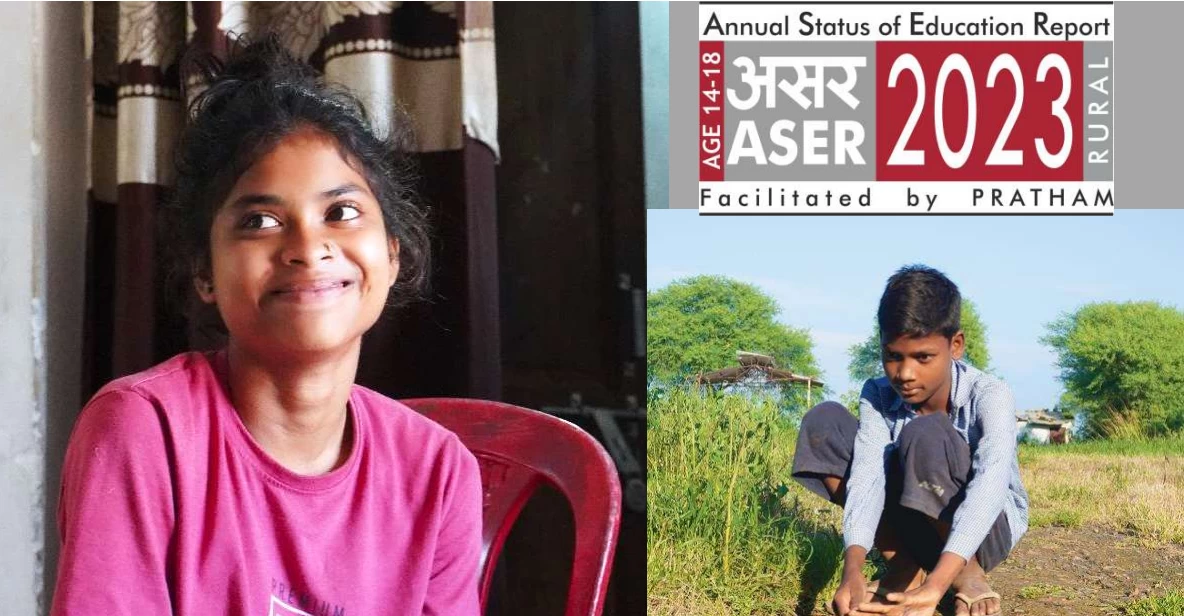Latest Updates
43% of the youth of rural India cannot read English, 25% struggle with the regional language: Annual Status of Educational Report 2023

The Annual Status of Educational Report 2023, released on Wednesday has revealed that about 25% of children belonging to the age group of 14-18 years in rural India cannot read standard 2-level text in their regional language. A staggering 43% cannot read sentences in simple English.
The report has revealed that 86.8% of the youth of rural India are enrolled in educational institutions. With 55.7% takers, Humanities has surfaced as the most studied discipline, followed by 31.7% who have opted for STEM, and only 9.4% have taken Commerce. However, the survey report has also stated that nearly 43% of those attending schools and colleges in rural India find it difficult to read sentences in simple English.
Filed based on a comprehensive study conducted on taking the “current activity” and the “ability to do basic and applied tasks” into account, with a special focus on access to digital devices and skills to perform digital tasks, the report has also taken the youth’s aspiration for their future into consideration.
Basic reading, math, and English abilities, application of basic skills to everyday calculations, reading and understanding of written instructions, and financial calculations that need to be done in real life were the tasks that the sample size had to undertake for the study.
To gauge the foundational skills of the youth, tools such as the ASER Reading tool, ASER Arithmetic tool, and the ASER English tool were deployed. The findings have revealed that 25% of the total sample size finds it difficult to read standard 2-level sentences in their regional language. More than half of them find it difficult to solve 1-3 digit division problems. About 43% of the total sample size cannot read English sentences written in simple English. To conclude, the researchers have stated that 76% of females have outshined their male counterparts when it comes to reading sentences in their mother tongue, however, the males have fared well when it comes to solving arithmetic and reading sentences in simple English.
The ASER 2023 also explored a variety of day-to-day calculations that require the application of numeracy, relevant to the daily life of the youth, and found that nearly 85% of the youth were adept in solving basic arithmetic problems, with the men outpacing the women in this category. Similarly, the youth was also administered which required them to apply financial calculations in tasks such as managing a budget, applying for a discount, and calculating loan payments, and again, the man fared better than their female counterparts.
“The overall patterns in the “ability” domain indicate that having basic foundational skills like reading and arithmetic are very helpful for activities... However, not everyone who has these foundational skills can correctly complete these tasks. These data show that application of skills in daily life situations needs substantial improvement,” concluded the ASER 2023 report assessing the overall patterns in the ability domain of the youth.
The ASER “Beyond Basics” survey was conducted in 28 districts across 26 states, with a sample size that comprises 34,745 youth belonging to the age group of 14-18 years of age. One rural district in each major state was surveyed except Uttar Pradesh and Madhya Pradesh where two districts were surveyed as a part of the study.






.webp)
.webp)

